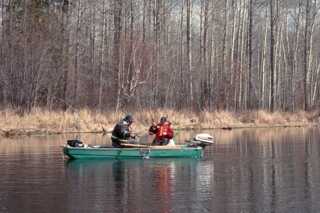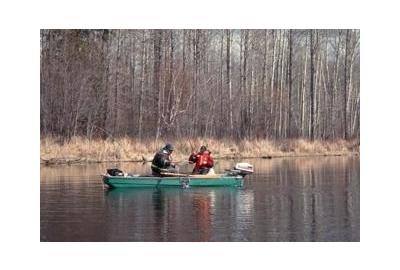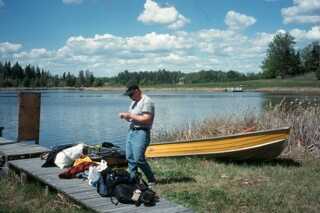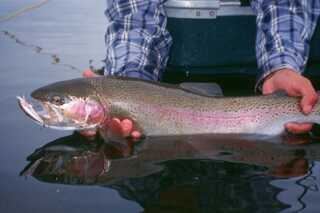I went fishing for rainbows twice this past week. Much to my delight, I’ve noticed a definite shift in trout activity. For the past few weeks fishing has been good, so long as I used a bead head fly under a strike indicator. The cold water largely responsible for keeping trout activity to a minimum, hence the need for a super slow finesse presentation. That’s changed. Recently I’ve been watching trout sharking, swirling and splashing about, sometimes with reckless abandon. Typically when trout are doing this, the water has warmed to their liking and they’ve taken to chasing minnows.


To put my theory to the test my buddy Arnold Carlin and I pulled out our plugs and went for it. We jumped in our boat and pitched plugs to the shore and were hammered repeatedly. Slowly we paddled a perimeter along the lakeshore casting plugs into the shallows and twitching them out. It never took long before we found another willing trout taking a shot at our stuff. The fishing was good. I went back a couple days later with my girlfriend Melanie, this time from shore, and we too pitched plugs with similar results. As evening fell the bite really picked up and we were into fish steady, including one double header.
Plugs and spoons have now become the order of the day. Flies will still catch fish, but given the trout’s heightened activity, plugs and spoons will do it better.
To consistently catch fish with either, use a stop go retrieve. Twitching with deliberate pauses gives fish time to strike. Also, while fishing will be good throughout the day, evening will produce even better. The reduced light will give the fish an added sense of security and because of that, they will push in shallow near shore and go on a heavy feed. If I’m around in the evening, I’ll often take to hunting. That is, I’ll hang out in a likely spot and watch the water for signs of fish, like a swirl or a splash. If I see this, I’ll send my plug or spoon right at the rings and typically I’m rewarded with strike.




